Last Updated on 06/12/2023
India is the land of divine spirituality. Temples in India are not just a place of worship, they are emotional. Devotees make their way to the temples and find hope, courage, and thankfulness. Temples in India date back to the ancient ages with centuries of positive vibes and energies embedded in every part of them. For many, going to the temple is a deeply moving and soul-stirring experience. The entire country is dotted with big and small temples, each holding equally important relevance for its devotees.
In case you wish to go temple exploring in India or anywhere else, then here are the top 30 largest Hindu temples in the world:
List of 30 Biggest Hindu Temples in the World
- Pashupatinath Mandir (Nepal)
- Angkor Wat (Cambodia)
- Sri Ranganathaswamy Temple (Tamil Nadu)
- Akshardham Temple (Delhi)
- Belur Math (West Bengal)
- Thillai Nataraja Temple (Tamil Nadu)
- Prambanan Trimurti Temple (Indonesia)
- Brihadeeswarar Temple (Tamil Nadu)
- Annamalaiyar Temple (Tamil Nadu)
- Dakshineswar Kali Mandir (West Bengal)
- Rajagopalaswamy Temple (Tamil Nadu)
- Ekambareswarar Temple (Tamil Nadu)
- Varadharaja Perumal Temple (Tamil Nadu)
- Thyagaraja Temple (Tamil Nadu)
- Jambukeswarar Temple (Tamil Nadu)
- Nellaiappar Temple (Tamil Nadu)
- Meenakshi Amman Temple (Tamil Nadu)
- Vaitheeswaran Koil (Tamil Nadu)
- Jagannath Temple (Odisha)
- Thrissur Vadakkumnathan Temple (Kerala)
- Birla Mandir (Delhi)
- Jageshwar Group of Temples (Uttarakhand)
- Kashi Vishwanath Mandir (Uttar Pradesh)
- Lingaraja temple (Odisha)
- Somnath Temple (Gujarat)
- Siddhi Vinayak Temple (Maharashtra)
- Kanchi Kailasanathar Temple (Tamil Nadu)
- Dwarkadheesh Temple (Gujarat)
- Virupaksha Temple (Karnataka)
- Khajuraho Temple (Madhya Pradesh)
1. Pashupatinath Mandir (Nepal)
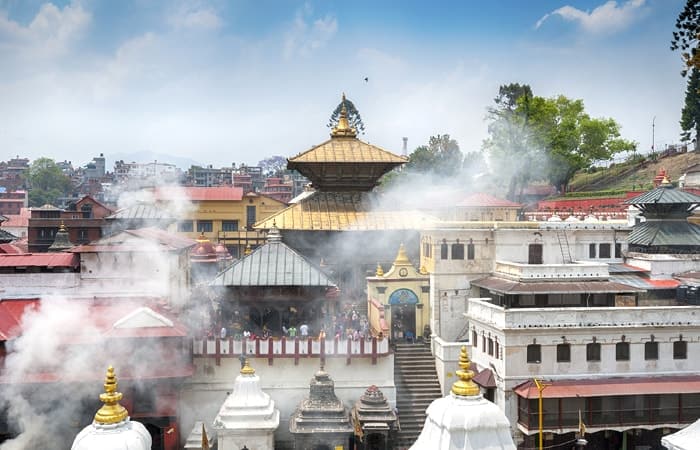
Dating back to 400 BC and dedicated to Lord Shiva, Pashupati Nath is the oldest Hindu temple in Nepal. Spread out over an area of 600 acres, the temple complex is replete with sprawling collections of shrines, inscriptions, ashrams, and images of gods and goddesses. Located on the banks of the Bagmati River, Pashupatinath temple is a UNESCO world heritage site.
2. Angkor Wat (Cambodia)

Panning out over an area of more than 400 acres, Angkor Wat is one of the largest religious monuments in the world. The temple complex was constructed under the patronage of the Khmer Empire. The glory of Angkor Wat is so palpable that it is also included in Cambodia’s national flag. This 12th-century temple was created with the aim of giving a spiritual home to Lord Vishnu.
3. Sri Ranganathaswamy Temple (Tamil Nadu)
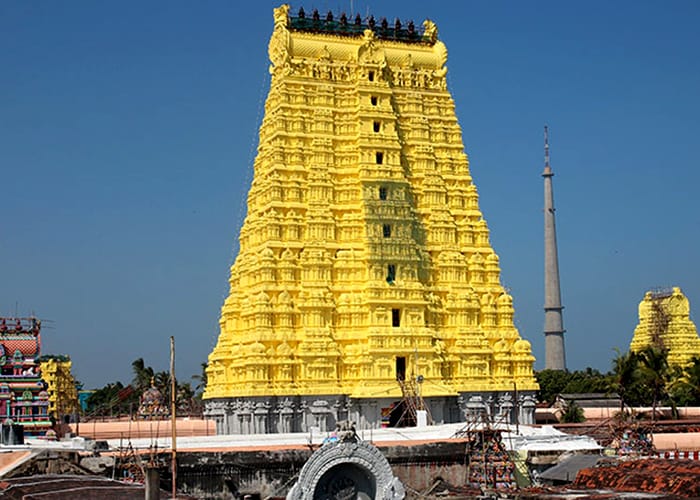
Sri Ranganathaswamy temple is an architectural marvel and the largest temple in India. The massive temple complex is spread out over an area of 155 acres and is dedicated to the Mahavishnu avatar of Lord Vishnu. It has 81 shrines, 21 towers, 39 pavilions, and numerous water tanks. Srirangam temple is more than a place of worship, it is also a charitable and economic center that runs free kitchen among other such services.
4. Akshardham Temple (Delhi)
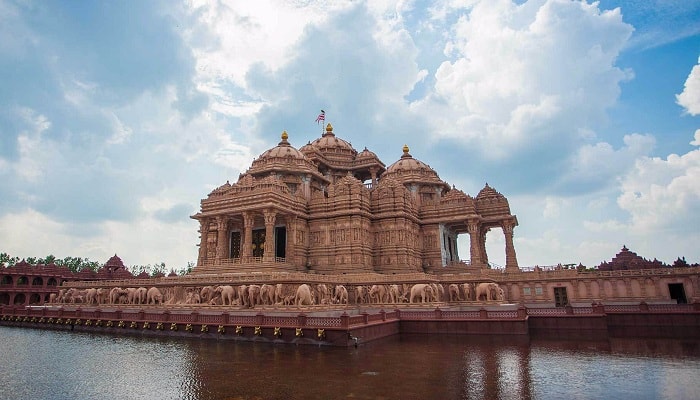
Inspired by Yogiji Maharaj and created by Pramukh Swami Maharaj, Swaminarayan Akshardham temple is a spiritual-cultural temple complex. Spread in a lavish area of 60 acres, the complex features Abhishek Mandap, Sahaj Anand water show, a thematic garden, a cultural boat ride, and an IMAX theatre among others. The various exhibition halls inform the visitors about the creator.
5. Belur Math (West Bengal)

Panning over an area of 40 acres, Belur Math is the headquarters of the Ramkrishna mission which was founded by Swami Vivekananda. Gracing the banks of the Hooghly River, the Belur Math Temple represents the heart of the Ramakrishna Movement. Its uniqueness is represented in the temple architecture as well since it contains signs and symbols of all religions.
6. Thillai Nataraja Temple (Tamil Nadu)
Spread out over an area of 40 acres, this iconic and massive Hindu temple is dedicated to Lord Natraja or the dancing god, which is a form of Shiva. This soul of Chidambaram has gone through a rich history of reconstruction and renovation that has resulted in it being one of the most iconic architecturally sound monuments in India. Every inch, pillar, and gopuram of the temple is covered in intricate carvings.
7. Prambanan Trimurti Temple (Indonesia)

Prambanan is the epitome of that. Built in the mid-9th century, Prambanan is the largest Hindu temple in Java. With the compound holding over 240 types of temple structures, Prambanan is also a part of the UNESCO World Heritage Site. Built-in a typical Hindu architectural style, Prambanan is dedicated to the Holy Trimurti of Brahma, Vishnu, and Mahesh.
8. Brihadeeswarar Temple (Tamil Nadu)
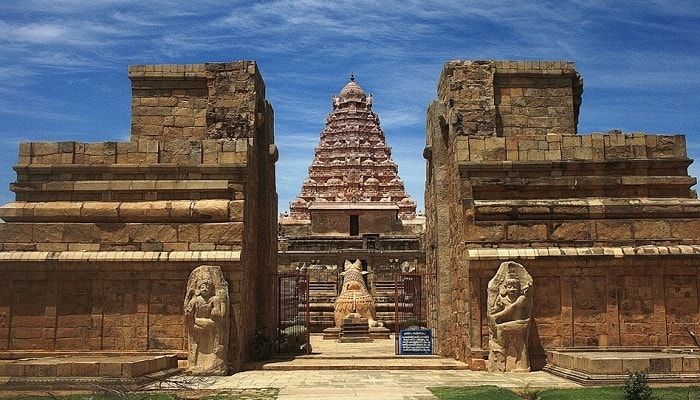
Covering a huge area of 25 acres on the bank of the Cauvery River in Thanjavur, Brihadeshwara Temple is a magnificent place of Shiva worship. The temple is constructed using the traditional Dravidian style of architecture and is also a UNESCO World Heritage site since it is also a part of the Great Living Cholas temple.
9. Annamalaiyar Temple (Tamil Nadu)

Also known as Arunachaleswara, Annamalaiyar Temple spreads out over a sprawling area of 25 acres. Dedicated to Lord Shiva the towering temple is dedicated to Lord Shiva and is located on the base of the holy Arunachala Hilltown. The temple displays masterful architecture with the presiding deity being the Agni Lingam.
10. Dakshineswar Kali Mandir (West Bengal)

Dakshineswar Kali Mandir in Kolkata is a Hindu Navratna Temple that spreads out over an area of 25 acres. Gracing the eastern banks of the holy Hooghly River, the current temple structure was built in 1855. The temple is home to 9 shrines dedicated to Shiva and Kali; a bathing Ghat and a riverfront temple dedicated to Radha Krishna.
11. Rajagopalaswamy Temple (Tamil Nadu)

Spread over an area of 23 acres, Rajagopalaswamy is an important place of worship for the Vaishnavite community. With the presiding deity being Lord Krishna, the temple has been given the title of ‘Dakshin Dwarka’ or the Dwarka of the south. Constructed by the Cholas, the temple boasts of a 192-foot towering Rajagopuram.
12. Ekambareswarar Temple (Tamil Nadu)
Situated in the holy town of Kanchipuram and dedicated to Lord Shiva, Ekambareswarar Temple is very significant in the life of Shaivites. Originally built by the Pallavas and later on improved by the Cholas the temple also represents a Pancha Bhoota Stalam or one of the 5 elements of life.
13. Varadharaja Perumal Temple (Tamil Nadu)

Dedicated to Lord Vishnu and situated in the holy city of Kanchipuram, Varadharaja Perumal Temple spreads out over an area of 20 acres. Other than its spiritual significance, it is also known as the place where one of the greatest Hindu scholars, Ramanuja once resided. The temple is an architectural marvel in itself.
14. Thyagaraja Temple (Tamil Nadu)

Thyagaraja is a Shiva temple that spreads over an area of almost 30 acres in Tiruvarur. It is home to 9 exotic and intricately built gopurams and several small temple shrines and structures which makes a visit here truly magical. Built under the masonry of the Chola rulers, it was later on expanded by the Vijayanagar rulers.
15. Jambukeswarar Temple (Tamil Nadu)

Covering an area of about 18 acres in Trichy, Jambukeswarar temple is dedicated to Lord Shiva. One of the early Cholas is credited with building this masterful piece of architectural wonder. Its location is on Srirangam Island, and the temple offers stunning views of the surroundings.
16. Nellaiappar Temple (Tamil Nadu)

Located on the northern banks of the Thamirabarani River in the Tirunelveli district, the Nellaiappar temple occupies a massive area of close to 18 acres. The original temple complex is said to have been built by the Pandyas and where Lord Shiva is worshipped in the form of Nellaiappar while his consort goddess Parvati is worshipped in the form of Kanthimathi Amman.
17. Meenakshi Amman Temple (Tamil Nadu)
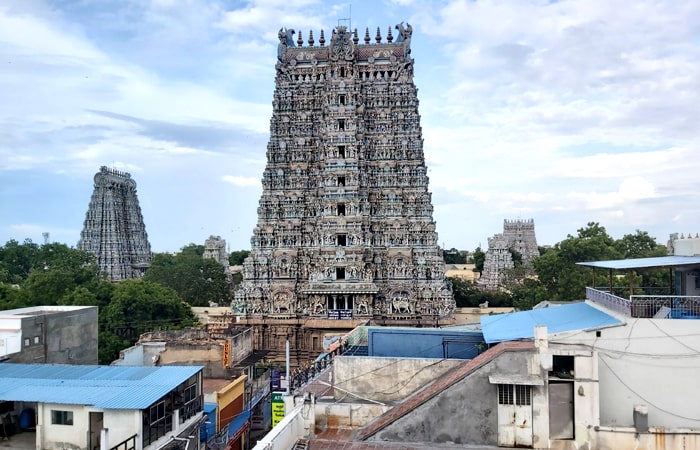
This historic Hindu temple, dedicated to goddess Meenakshi, a form of Parvati, graces the southern banks of the Vaigai River. Spread out over an area of 17 acres, Meenakshi Amman temple is located in the holy temple city of Madurai. The temple has found its mention in several ancient sacred texts. It is one of the most powerful Devi temples in India and is a must-visit for anyone willing to learn more about Indian Culture.
18. Vaitheeswaran Koil (Tamil Nadu)

Dedicated to Lord Shiva, Vaitheeswaran Koil is spread out over an area of about 15 acres. The temple worships Vaitheeswaran who is the ‘god of healing’. It is believed that a visit to this temple will cure devotees of diseases they may be suffering from. Taking a holy dip in the water tank here will do the job for you and leave you with a feeling of divine intervention.
19. Jagannath Temple (Odisha)
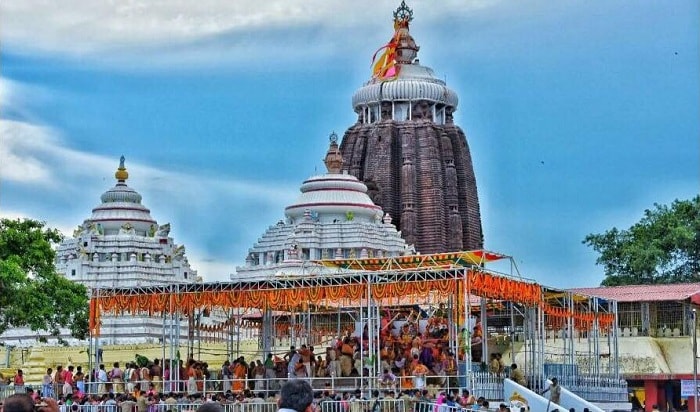
Dedicated to the Jagannath form of Lord Vishnu, the iconic ancient temple of Jagannath spreads out over an area of 10 acres. It is also one of the holy Char Dham temples in India which represents the western edge of the subcontinent. This Puri temple is mainly famous for its annual Rath yatra and several folklore involving the development and building of this temple.
[ Click Here to Enquiry for Jagannath Puri Tour ]
20. Thrissur Vadakkumnathan Temple (Kerala)
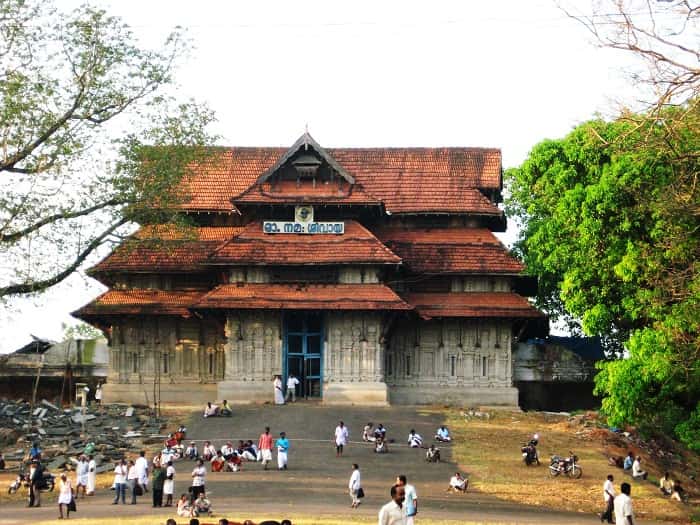
Situated in ‘god’s own country’ Thrissur Vadakkunnathan temple is an ancient place of Shiva worships that pans out in an area of 8.8 acres. The temple displays the unique architectural style of a traditional Keralite home. According to local lore, the temple was first built by Parashurama, the 6th Vishnu avatar. It looks very different from traditional temples and attracts visitors and Shiva devotees from across the globe.
21. Birla Mandir (Delhi)

Also referred to as Laxmi Narayan Temple, Birla Mandir is situated on an area of 7.4 acres. The temple is dedicated to the Laxminarayan form of Lord Vishnu who is the preserver of the universe. The temple was built by the Birla family in 1939 and is made using the traditional Hindu temple form of architecture. The buildings are elaborate, lofty, and very spacious at the same time. It represents the glory of Hinduism through immaculate architectural brilliance.
22. Jageshwar Group of Temples (Uttarakhand)
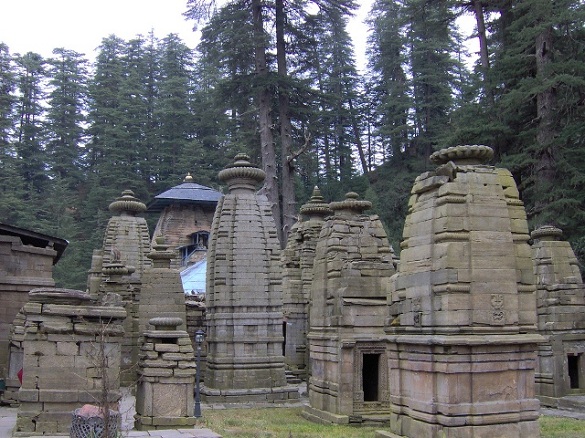
Located in the district of Almora in Devbhoomi, the Jageshwar group of temples is a collection of 125 big and small temples and shrines. This ancient temple complex can be dated between the 7th and 14th century. Spread out in the valley of Jageshwar and blessed with lush green forests and streams of the river, the temple also offers stunning views of the Himalayas. The temple group was built by the Chand kings during their reign in the hill state.
23. Kashi Vishwanath Mandir (Uttar Pradesh)
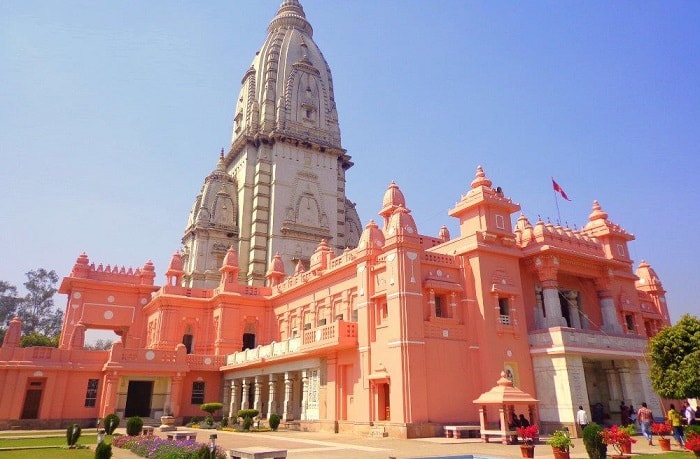
Located in the spiritual hub of Varanasi, the ancient Shiva temple of Kashi Vishwanath is the landmark temple is not just UP but India as well. The golden roof of the temple has also garnered it the name of the Golden Temple. The temple is built on the place where Shiva had emerged as a bright pillar of light or a jyotirlinga. Located in the heart of the city, the temple springs to life during some important Shiva festivals. A visit there will be a deeply rejuvenating one.
24. Lingaraja Temple (Odisha)
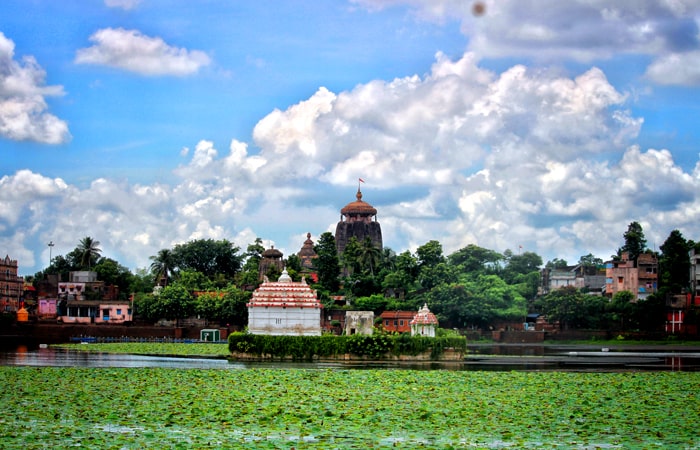
Dedicated to Lord Shiva, Lingaraja temple is one of the oldest temples in Odisha. Located in Bhubaneswar, the imposing 180-foot-tall structure is described as one of the purely Hindu temples in India. The sprawling temple complex houses over 150 subsidiary shrines and proudly marks the culmination of temple architecture in Bhubaneswar. The presiding deity is dedicated to the ‘self-forming’ form of Lord Shiva or the swayambhu which makes this temple very important for all Shiva Bhakts.
25. Somnath Temple (Gujarat)
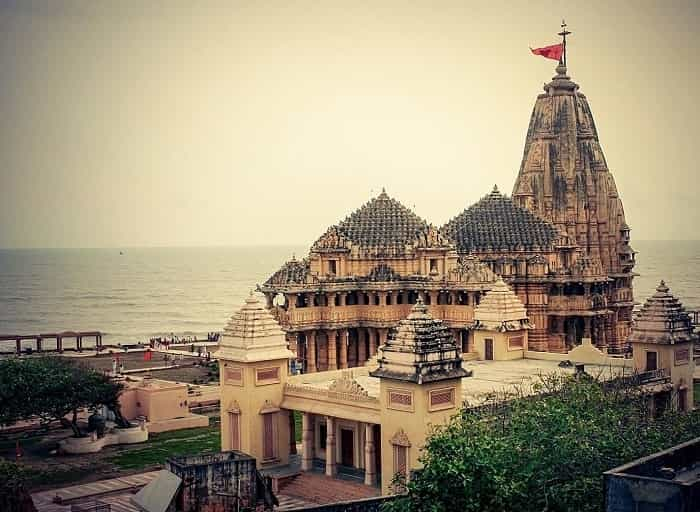
Situated in Devbhoomi Gujarat, the Somnath temple is an iconic piece of architecture that is replete with legendary historical events. The Jyotirlinga is located against the lashing waves of the Arabian Sea in the Prabhas Patan region. Built by the moon god himself and dedicated to Lord Shiva, Somnath Mahadev temple has been through a tumultuous past of being destroyed and reconstructed numerous times. Built in Maru Gurjara style of temple architecture, Somnath Mahadev is a must-visit Shiva temple for Hindu devotees or history enthusiasts.
Suggested Tours
26. Siddhi Vinayak Temple (Maharashtra)

Dedicated to Lord Ganesha, Siddhi Vinayak Mandir in Mumbai is one of the most loved temples in India. The presiding deity of the temple is worshipped in the form of a black stone idol and is frequented by devotees all year long. The unique third eye etched in lord Ganesha’s forehead kind of replicates that of Lord Shiva’s. The lord is flanked on both sides by Riddhi, Siddhi, signifying sanctity, fulfillment, prosperity, and riches. The temple is also involved in several charitable activities as well.
27. Kanchi Kailasanathar Temple (Tamil Nadu)

Built during the Pallava era, this iconic Hindu temple in Kanchipuram is one of the oldest surviving monuments in Kanchipuram. Built during the 7th century, it displays a solid Dravidian style of architecture and design. Dedicated to various forms of Shiva, the temple complex is home to 58 small shrines, depicting those forms and is notable for its intricate carvings and engravings. The temple is one of the most prominent attractions in the city and is an unmissable part of Tamil Nadu tourism.
28. Dwarkadhish Temple (Gujarat)
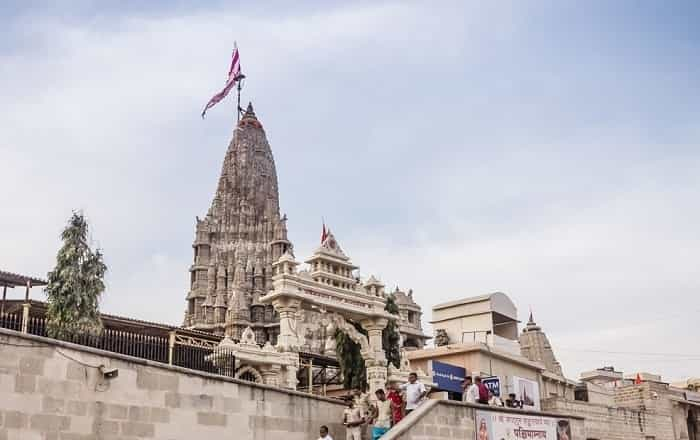
Gracing the westernmost corner of the Char Dham Yatra in India, the Dwarkadheesh temple is another iconic landmark of Devbhoomi Gujarat. Dedicated to Lord Krishna, who is worshipped here as the lord of Dwarka, the temple is located in the heart of the city. The towering temple that can be reached after climbing several steps, is one of the holiest Vishnu temples in the world. It is believed to have been built by Lord Krishna’s grandson on the place of his residence making it incredibly pious and holy for all believers.
Suggested Tours
29. Virupaksha Temple (Karnataka)
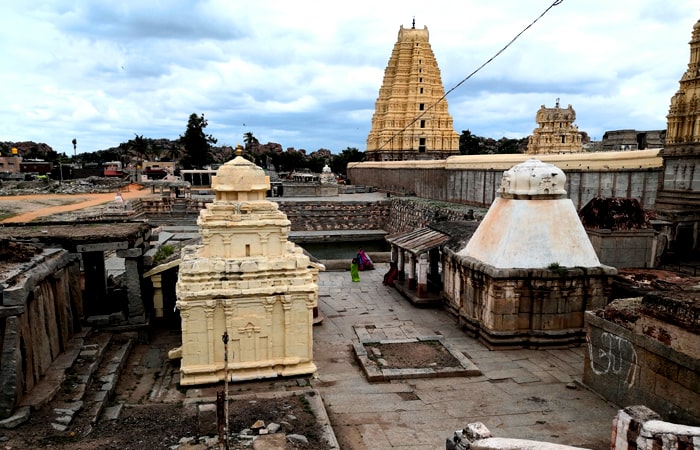
Situated in Hampi, Virupaksha temple is a part of the Hampi group of monuments, which is also a notable UNESCO World Heritage site. Dedicated to Lord Virupaksha, or a form of Lord Shiva, the temple was built by a Nayaka chief by the banks of the holy Tungabhadra River. Considered to be the most sacred sanctuary for centuries, Virupaksha is a center for pilgrimage in Hampi as well as Karnataka as a whole. Surrounded by abandoned ruins of structures, the temple stands tall where daily worshippers go to offer their prayers.
30. Khajuraho Temple (Madhya Pradesh)
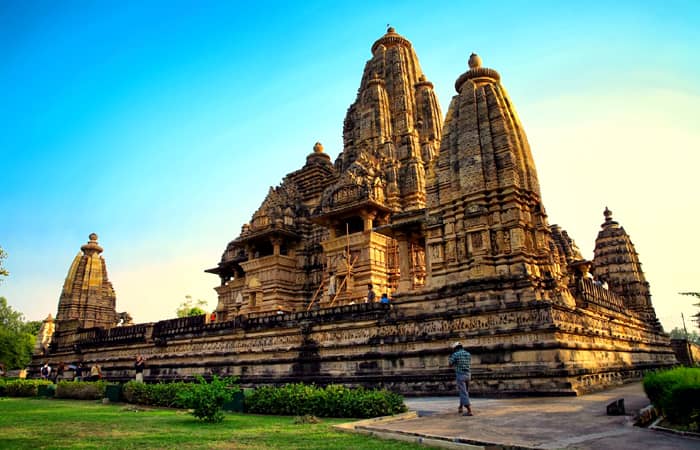
Located in Chattarpur, 175 kms away from Jhansi, Khajuraho is a building complex which is also a UNESCO World Heritage site. This group of ancient temples is famous for its Nagara style of architecture, and the graceful and iconic figurines, engravings, and carvings of the nayikas and deities on the walls. Built by the rulers of the Chandela dynasty, Lord Shiva is the presiding deity of the temple. People from all over the world visit Khajuraho to witness a temple like no other.
Frequently Asked Questions (FAQs)
Q. Which Is The Oldest Temple in India?
Ans. Mundeshwari temple in Bihar is the oldest temple in India.
Q. How Many Temples Are There In India?
Ans. There are over 2 million temples in India.
Q. Which City Is Known As The Temple City Of India?
Ans. Bhubaneswar is dubbed the temple city of India.
Q. How Old Is Rameswaram Temple?
Ans. Rameswaram temple was built during the 12th century by the Pandya rulers.
Q. Which Are The Top 3 Famous Temples In India?
Ans. The top 3 famous temples in India are – Kedarnath, Rameswaram, and Dwarkadhish. However, there are millions of temples in India and ranking them is not right.





























 Call
Call WhatsApp
WhatsApp Enquiry
Enquiry